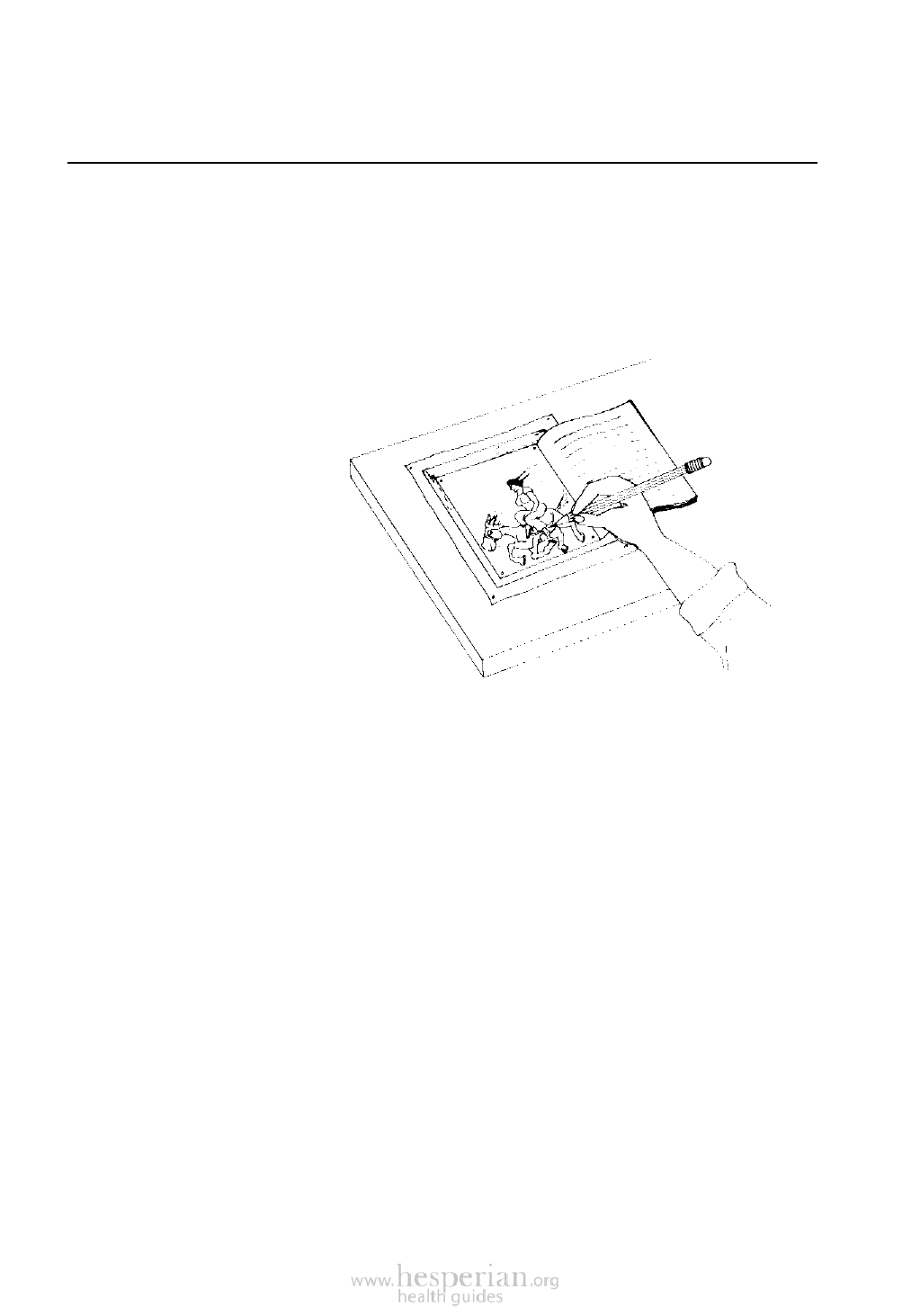
Learning to Make, Take,
and Use Pictures
12CHAPTER
12-1
Being able to make and use pictures effectively is one of the most valuable
skills a health worker or teacher of health workers can learn. In this chapter we
look at:
• different ways of presenting ideas through pictures
• making sure your drawings
communicate what you want
• when to use cartoons and
when to draw people as
realistically as possible
• learning to draw
• how to draw the
human body
• techniques for copying
• suggestions for taking and
using photos
• use of symbols
• the importance of a sense of
humor
This drawing and many others in this book were
done by Pablo Chavez, a village health worker
from Mexico who taught himself to draw.
DIFFERENT WAYS TO ILLUSTRATE THE SAME IDEA
On the next page are 5 different kinds of illustrations: 2 photos and 3 drawings.
Each kind is useful in certain circumstances.
Photos are often more exact (if well done), and they can give a sense of reality to a
message. But they are more expensive to reproduce in manuals, information sheets,
and posters than are line drawings. Photos cannot be or easily copied by health
workers.
Drawings have the advantage of being less costly to make and reproduce.
Health workers can learn to copy drawings to use for their own teaching materials.
Also, a careful drawing often can illustrate a specific health problem more clearly than
a photo.